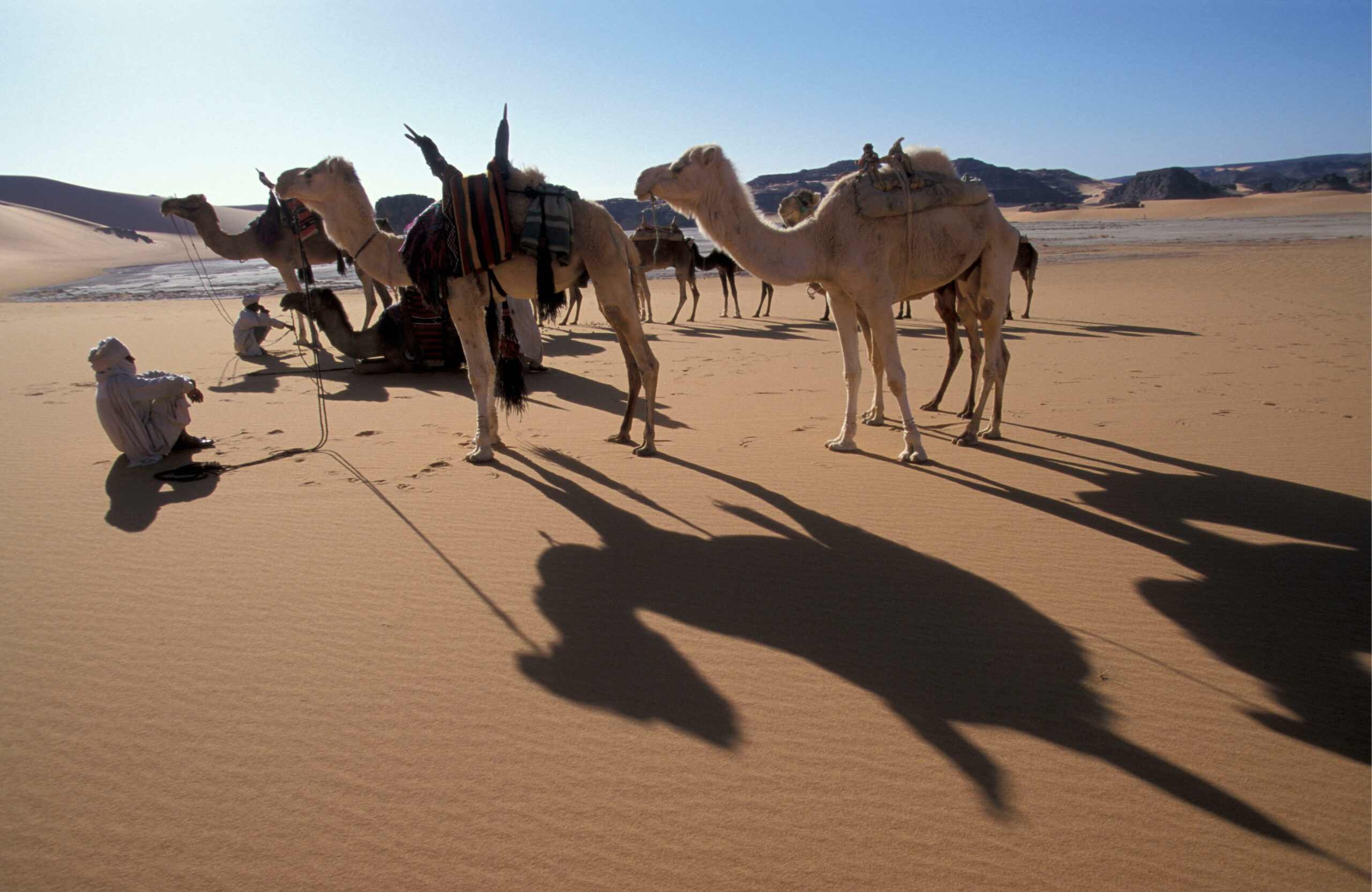New sources of income for the Tuareg
Today, caravan trade has virtually disappeared. The Tuareg have turned to other economic activities: livestock farming, agriculture and Saharan tourism.
Livestock farming, the primary Saharan resource
Livestock remains the main source of wealth for families: goats, sheep, donkeys and camels are raised in a semi-nomadic lifestyle. Sheep and goats provide milk, meat and skins. Donkeys are used for transport. Camels enable long journeys and water supply.
The division of labour is traditional: women take care of small livestock and milking, while men take care of camels. Tuareg children participate in pastoral life from an early age.
Agriculture and oases
Many sedentary Tuaregs cultivate the land around the oases. Thanks to modernised techniques, Saharan agriculture now allows for production to be exported to several African countries.
Tourism and crafts
The development of Saharan tourism has enabled certain regions to diversify their income. Tuareg communities proudly welcome travellers who come to discover their culture, music and the landscapes of Tassili n’Ajjer or Hoggar.
At the same time, local crafts have grown in strength: jewellery, leather goods, musical instruments and other items also contribute to the livelihood of these desert peoples.

